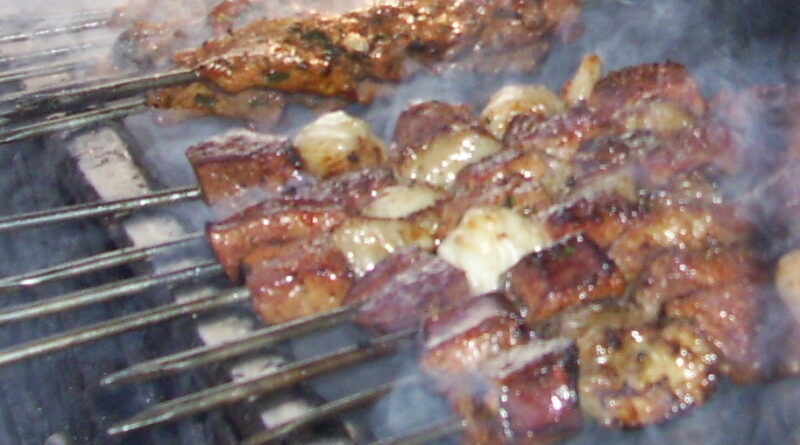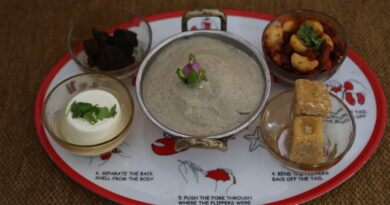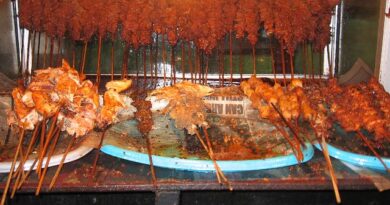Ahriche
Ahriche: The Hidden Gem of Berber Cuisine
Introduction
In the diverse culinary landscape of North Africa, where dishes like couscous and tagine often take the spotlight, there exists a lesser-known but equally remarkable dish: Ahriche. This traditional Berber dish, native to the Atlas Mountains of Morocco, embodies the rich cultural heritage of the Amazigh (Berber) people. Ahriche is a unique culinary creation that reflects the indigenous community’s deep connection to the land, showcasing resourcefulness, creativity, and sustainability in its preparation.
Ahriche is not merely a dish; it is an experience. Rooted in tradition and passed down through generations, it is a meal that celebrates the bounty of nature, utilizing local ingredients in a rustic but elegant manner. This article delves into the origins, cultural significance, ingredients, and preparation of Ahriche, along with its role in modern Moroccan cuisine and its potential as a global culinary treasure.
The Origins of Ahriche: A Berber Tradition
The Berbers, or Amazigh people, are one of North Africa’s oldest indigenous populations, with a history that spans thousands of years. Their culture is characterized by a deep connection to the natural world, as seen in their music, art, and food. The Berbers are primarily spread across Morocco, Algeria, Tunisia, Libya, and parts of the Sahara Desert, with each region contributing its own flavors to the broader Amazigh culinary tradition.
Ahriche is a traditional dish that has its origins in the rural Berber communities of Morocco, particularly those living in the High Atlas Mountains. These mountainous regions are known for their harsh climate and limited agricultural resources, so the Berber people developed a cuisine that maximized the use of available ingredients, such as herbs, livestock, and wild plants. Ahriche was born out of this necessity, serving as a hearty meal that could be prepared with minimal ingredients yet provide nourishment and satisfaction.
Historically, Ahriche was prepared as a communal meal during special occasions or when villagers gathered for seasonal celebrations. The dish’s preparation involved a group effort, with each member of the community contributing to different aspects of its cooking. This communal aspect of Ahriche not only made it a nourishing dish but also a social one, where food became a medium for storytelling, bonding, and celebration.
What is Ahriche?
Ahriche is, at its core, a simple dish, but one that is rich in flavor and deeply tied to the land. It is typically made with wild herbs, spices, and either lamb or goat meat. The dish is unique in that it is traditionally cooked using branches or sticks (ahrich), which give the dish its name. The meat is spitted onto these sticks and roasted over an open fire, often outdoors, imparting a smoky, earthy flavor that is distinct to Ahriche.
The dish can be described as a type of kebab, but its preparation and presentation set it apart from the more commonly known kebabs of the Middle East or North Africa. What makes Ahriche special is the use of local, foraged herbs, which are often wrapped around the meat before it is roasted. These herbs not only enhance the flavor of the meat but also add an aromatic complexity to the dish, making each bite a sensory experience.
Ingredients Used in Ahriche
Ahriche’s ingredients are simple but packed with flavor, and they reflect the Berber people’s connection to their environment. The ingredients can vary slightly depending on the region and season, but the core components usually include:
- Meat: Traditionally, lamb or goat meat is used in Ahriche. These animals are commonly raised in the mountainous regions of Morocco, where the dish originated. The meat is typically cut into small pieces for easy roasting, and its rich, slightly gamey flavor complements the smoky cooking method.
- Wild Herbs: The unique flavor of Ahriche comes from the wild herbs used in its preparation. These herbs are often foraged from the surrounding landscape, and common varieties include thyme, rosemary, and marjoram. In some regions, specific Berber herbs known for their medicinal properties may also be used.
- Spices: Moroccan cuisine is known for its complex spice blends, and Ahriche is no exception. While the spices used can vary, a typical Ahriche seasoning includes cumin, coriander, paprika, and turmeric. These spices are often mixed with olive oil to create a marinade for the meat, adding depth and warmth to the dish.
- Olive Oil: Olive oil is an essential ingredient in Ahriche, used both in the marinade and as a cooking aid. Morocco is one of the largest producers of olive oil in the world, and its use in traditional dishes like Ahriche reflects the country’s agricultural heritage.
- Sticks or Branches (Ahrich): One of the defining features of Ahriche is the way it is cooked. Sticks or branches from specific trees (often from olive, oak, or almond trees) are used to skewer the meat, and these natural skewers impart a subtle, smoky flavor to the dish. The sticks are chosen carefully to ensure that they burn slowly and evenly, allowing the meat to cook perfectly without charring.
Preparation and Cooking Method of Ahriche
The preparation of Ahriche is a labor of love, often involving multiple steps that require time, patience, and skill. While modern adaptations of the dish can be made using kitchen appliances, the traditional method of cooking Ahriche over an open fire remains the most authentic and rewarding way to enjoy this Berber delicacy.
Step 1: Marinating the Meat
The first step in preparing Ahriche is to marinate the meat. The pieces of lamb or goat are coated with a mixture of olive oil, spices (such as cumin, paprika, and coriander), and fresh herbs. Some cooks prefer to add garlic or onions to the marinade, while others stick to the basic herb-and-spice blend. The meat is left to marinate for several hours, or even overnight, allowing the flavors to penetrate deeply.
Step 2: Skewering the Meat
Once the meat has absorbed the flavors of the marinade, it is time to skewer it onto the branches or sticks. The skewers are an essential part of the Ahriche experience, as they impart a unique flavor to the meat as it cooks. In rural Berber communities, the sticks are often gathered from nearby trees, and some cooks even select specific branches for their aromatic properties.
The meat is skewered along with the wild herbs, which are wrapped around the meat to create layers of flavor. This technique ensures that the meat remains tender and moist while cooking, and it adds an extra dimension of taste to the finished dish.
Step 3: Roasting the Meat
Traditionally, Ahriche is cooked over an open fire, with the skewers placed directly over the flames or hot coals. The fire is carefully controlled to ensure that the meat cooks evenly without burning. The slow roasting process allows the fat from the meat to melt into the herbs, creating a succulent, smoky flavor that is the hallmark of Ahriche.
The cooking process requires close attention, as the skewers need to be turned frequently to ensure that the meat cooks evenly on all sides. This communal aspect of the cooking process is one of the reasons why Ahriche is often prepared during social gatherings or festivals.
Step 4: Serving Ahriche
Once the meat is perfectly roasted, it is removed from the skewers and served hot. Ahriche is typically eaten with freshly baked flatbread (such as khobz) and accompanied by side dishes like grilled vegetables or salads. In keeping with Berber tradition, the dish is often enjoyed communally, with family and friends sharing from a large platter.
Cultural Significance of Ahriche
Ahriche is more than just a meal; it is a symbol of Berber resilience, resourcefulness, and respect for nature. The dish’s preparation reflects the Amazigh people’s ability to make the most of their natural surroundings, using foraged herbs and locally raised livestock to create a flavorful, nourishing dish.
In Berber culture, food is a central part of communal life, and Ahriche is often prepared for special occasions, such as weddings, religious festivals, and harvest celebrations. The dish brings people together, both in its preparation and in its consumption, reinforcing the values of community, hospitality, and sharing.
Ahriche also represents the Berber people’s connection to their land. The use of wild herbs and natural skewers highlights the importance of sustainable, local ingredients in Berber cooking. Foraging for herbs and selecting the right branches for skewers is an art form in itself, passed down through generations and rooted in a deep understanding of the environment.
Modern Adaptations and Global Recognition
As Moroccan cuisine continues to gain international recognition, Ahriche is beginning to find its place on the global culinary stage. While it is still relatively unknown outside of Morocco, chefs and food enthusiasts are starting to explore the dish’s unique flavors and cooking methods.
In urban areas, restaurants are offering modern interpretations of Ahriche, using more readily available ingredients and kitchen appliances to recreate the dish. Some chefs are experimenting with different types of meat, such as chicken or beef, while others are incorporating new spices and marinades to give the dish a contemporary twist.
Ahriche’s rustic, smoky flavor and emphasis on local, sustainable ingredients align with current food trends, making it a potential breakout dish in the global market. As more people seek out authentic, traditional dishes that reflect a connection to nature and culture, Ahriche has the potential to become a culinary ambassador for Berber cuisine.
Conclusion: Ahriche’s Enduring Legacy
Ahriche is a dish that encapsulates the spirit of Berber culture—simple, resourceful, and deeply connected to



